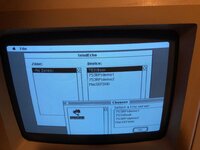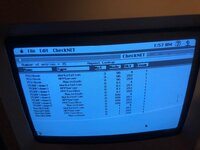Thanks for your comments on my "AppleTalk Hell". So net 0 is not a normal net number. Hmmm why does all the LToUDP vMac use net 0?
Is there a way to force it to a "normal" network number?
And why is the MacBook (or iBook) better in handeling some parts of the network? All devices can see the vMac with LToUDP support on the iBook. (I will do test without the MacIPRpi and netatalk.)
This is how my networks looks if I connect everything together now:
- Macintosh ED with AppleTalk adapter to Macintosh SE FDHD running the Chooser and SendEcho
- Macintosh Macintosh SE FDHD connected to the TashTalk Hat / Rpi ( MacSEFDHD)
- Rpi is also a MacIPRPI with netatalk 2.2.x ( also running multitalk). Also running two instances of running vMac with LToUDP support ( 753RPidemo1 and 2)
- Basilisk II on a Windows 10 PC ( virtquadra)
- iBook ( vintage laptop running MacOS 10.4.11 running vMac with LToUDP support
See pictures:

1 - Macintosh ED with AppleTalk adapter to Macintosh SE FDHD running the Chooser and SendEcho

2 - Macintosh Macintosh SE FDHD connected to the TashTalk Hat / Rpi ( MacSEFDHD)

3 - Rpi is also a MacIPRPI with netatalk 2.2.x ( also running multitalk). Also running two instances of running vMac with LToUDP support ( 753RPidemo1 and 2)

4 - Basilisk II on a Windows 10 PC ( virtquadra)

5 iBook ( vintage laptop running MacOS 10.4.11 running vMac with LToUDP support






